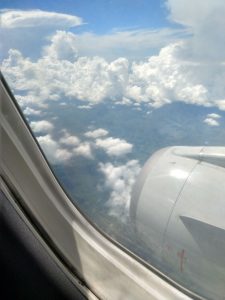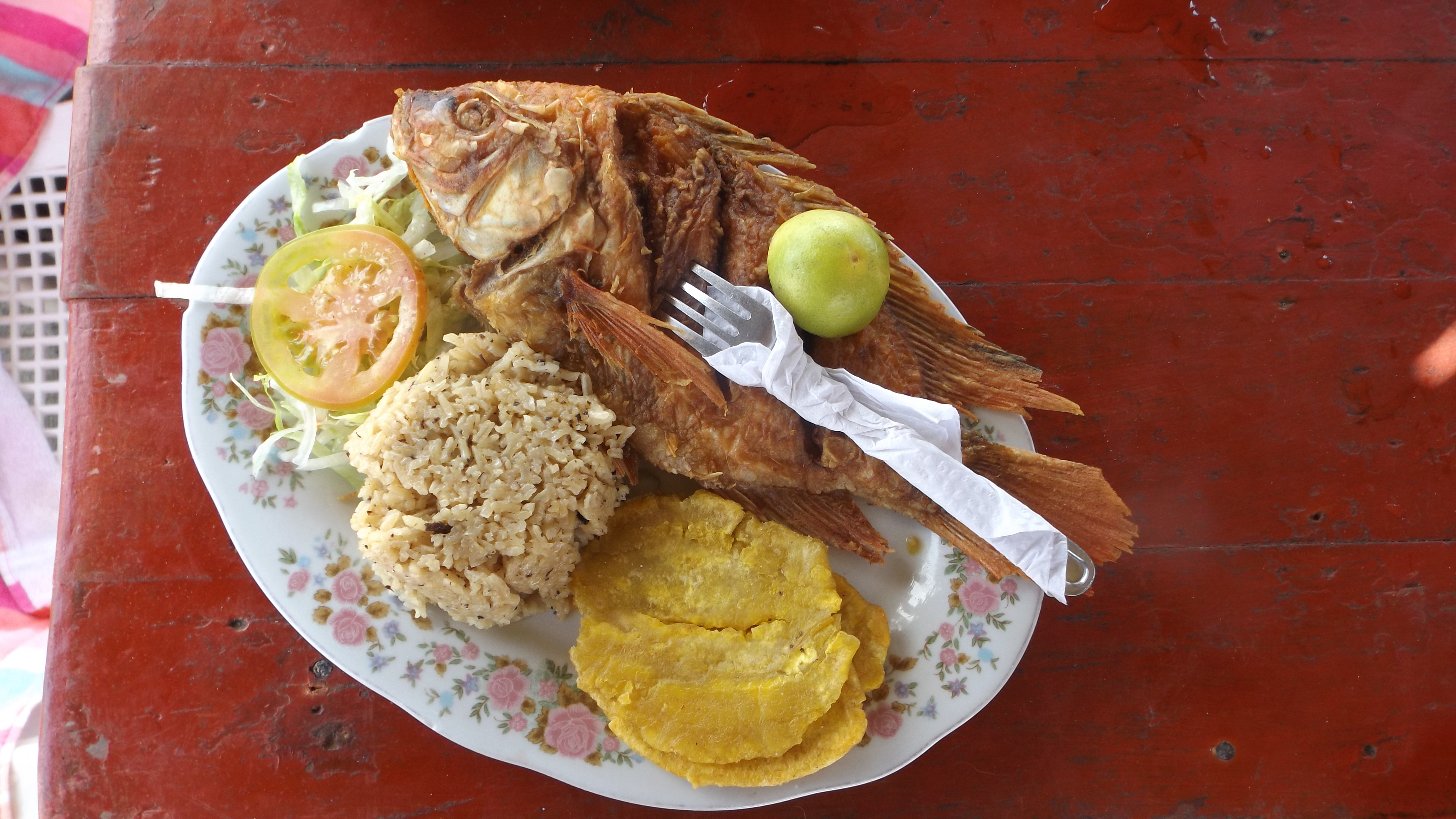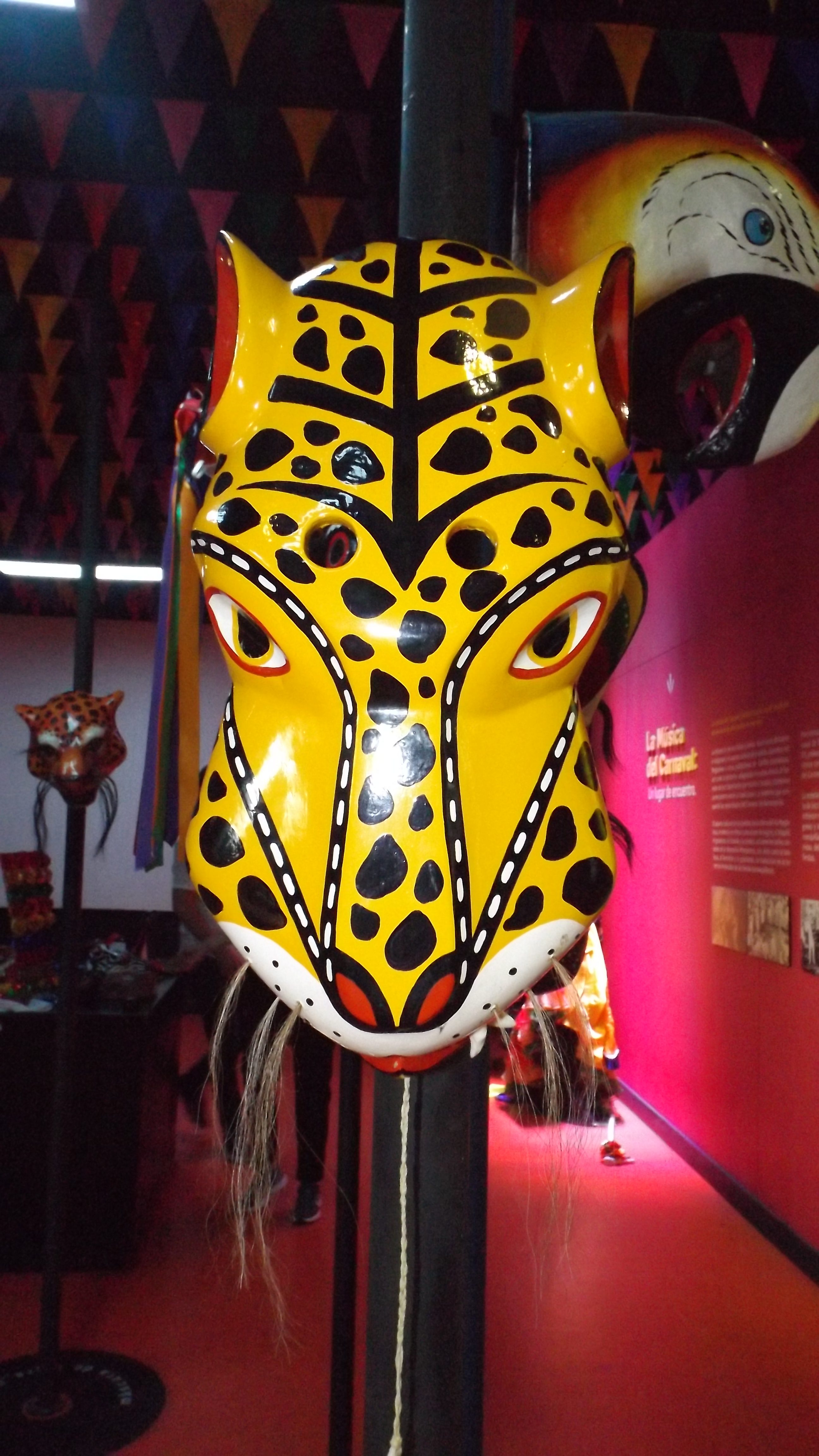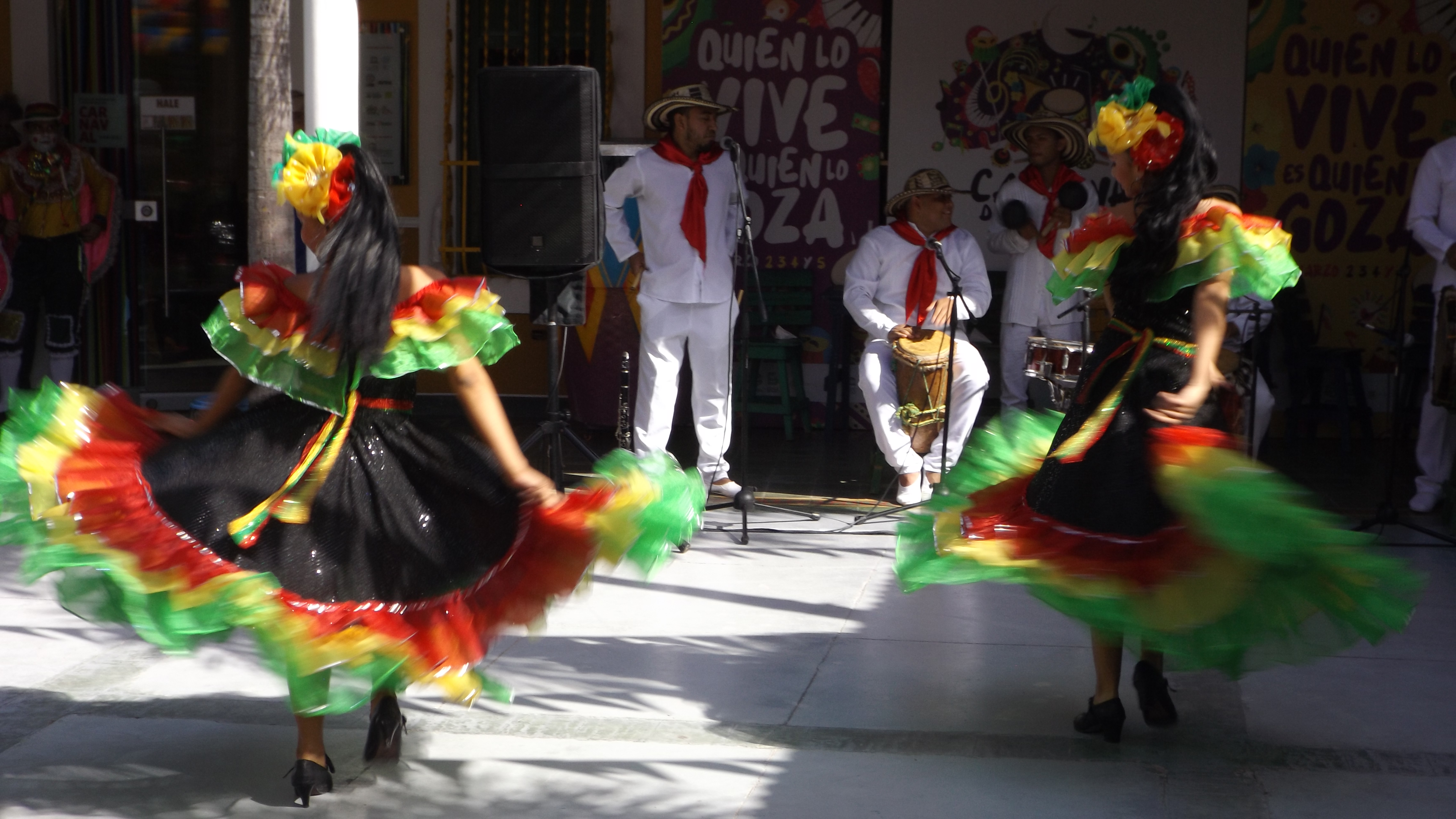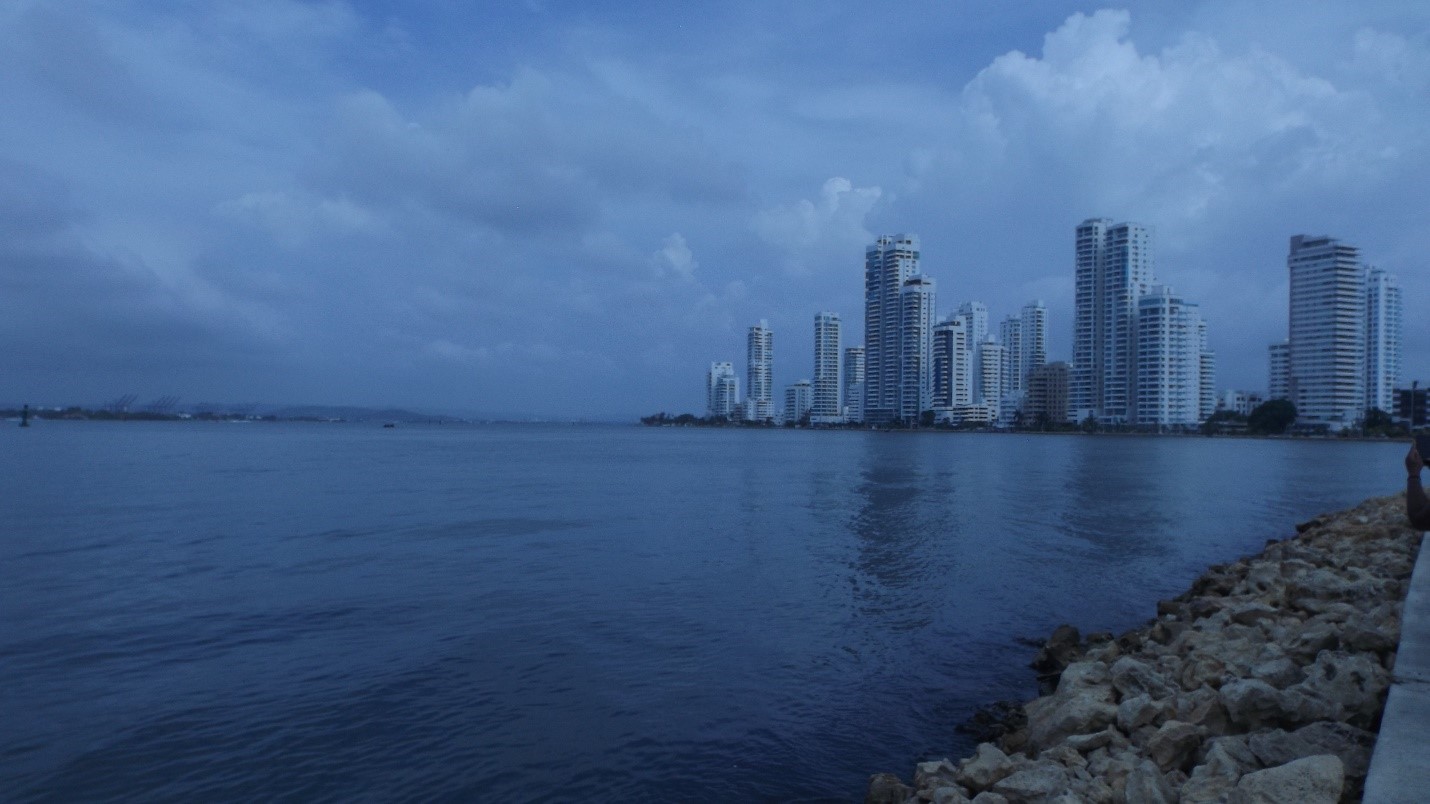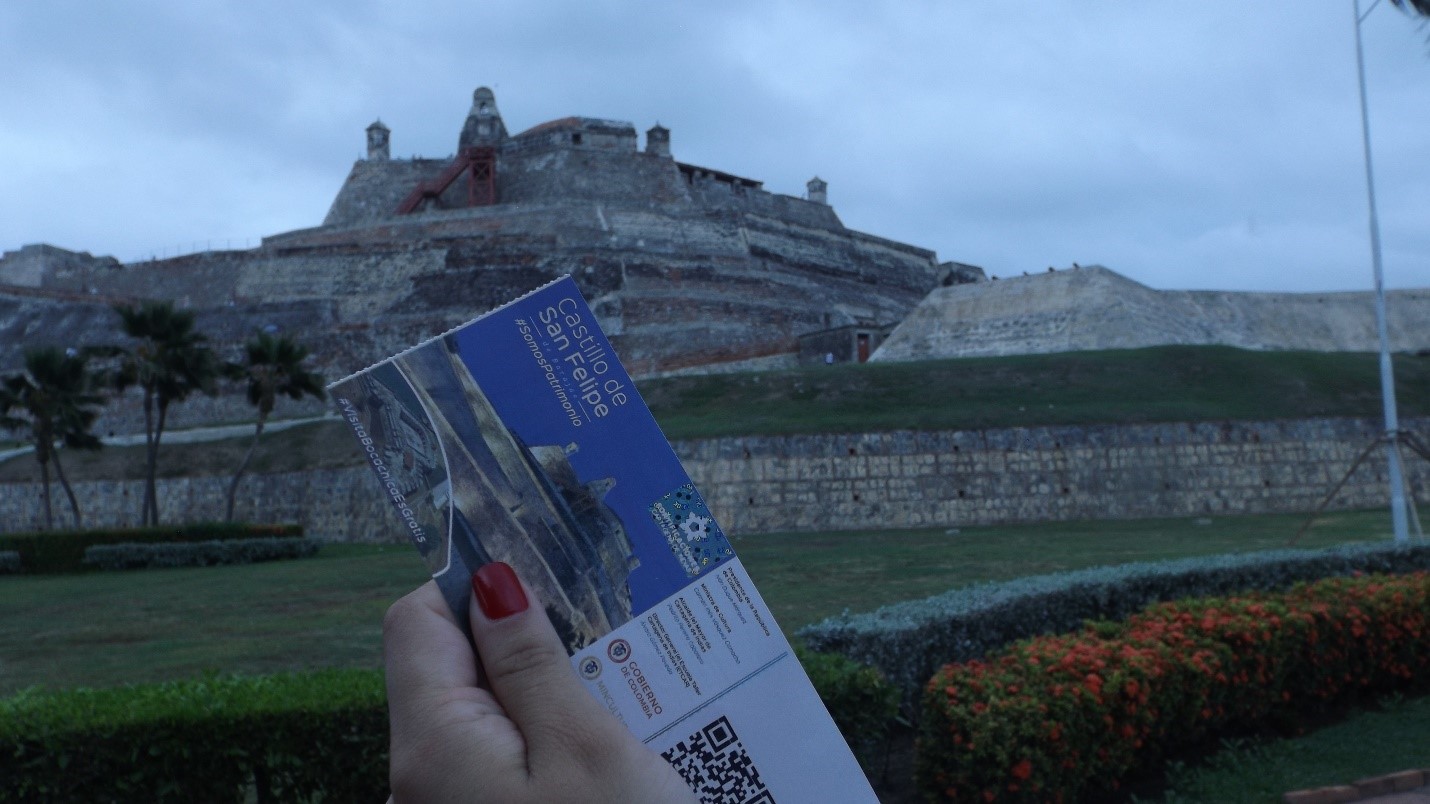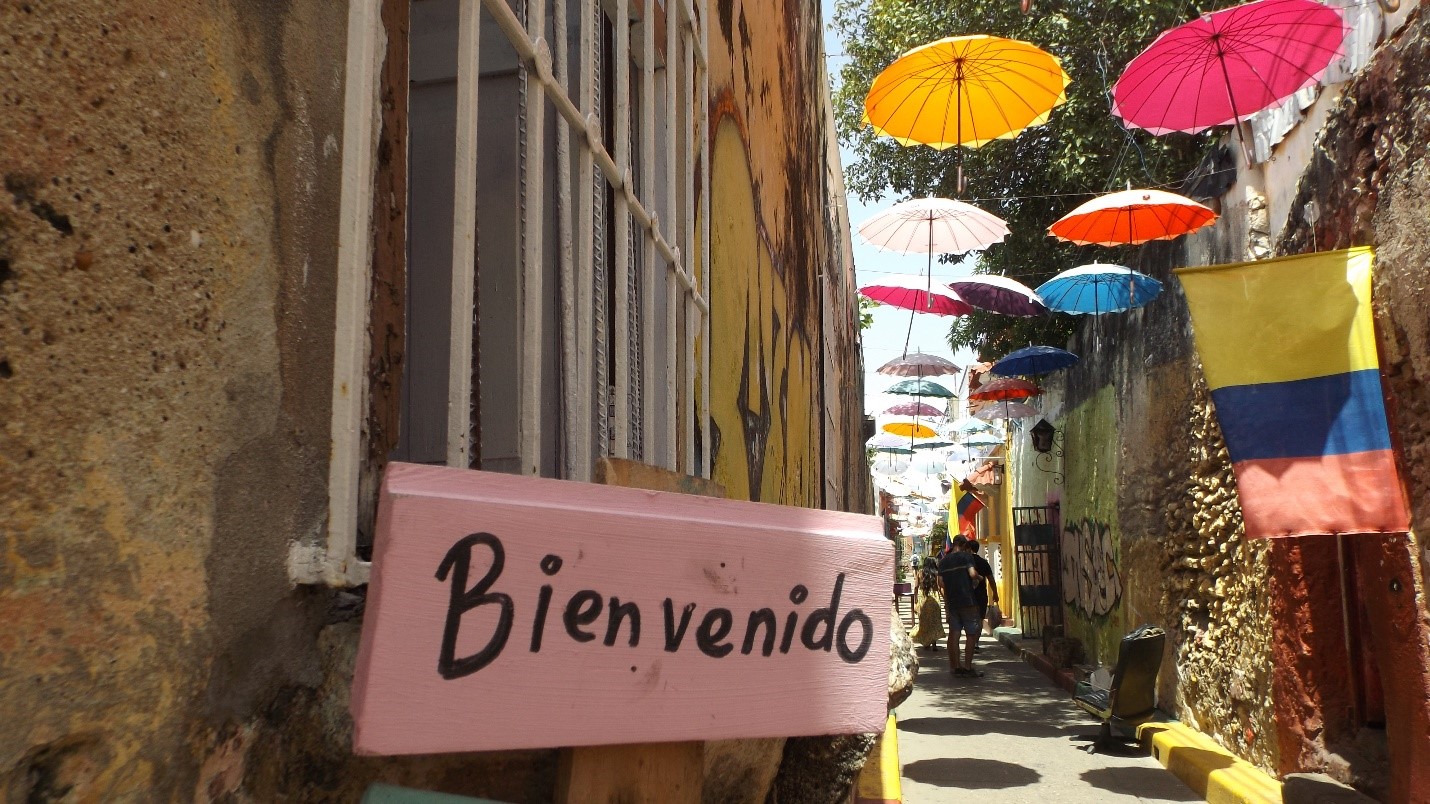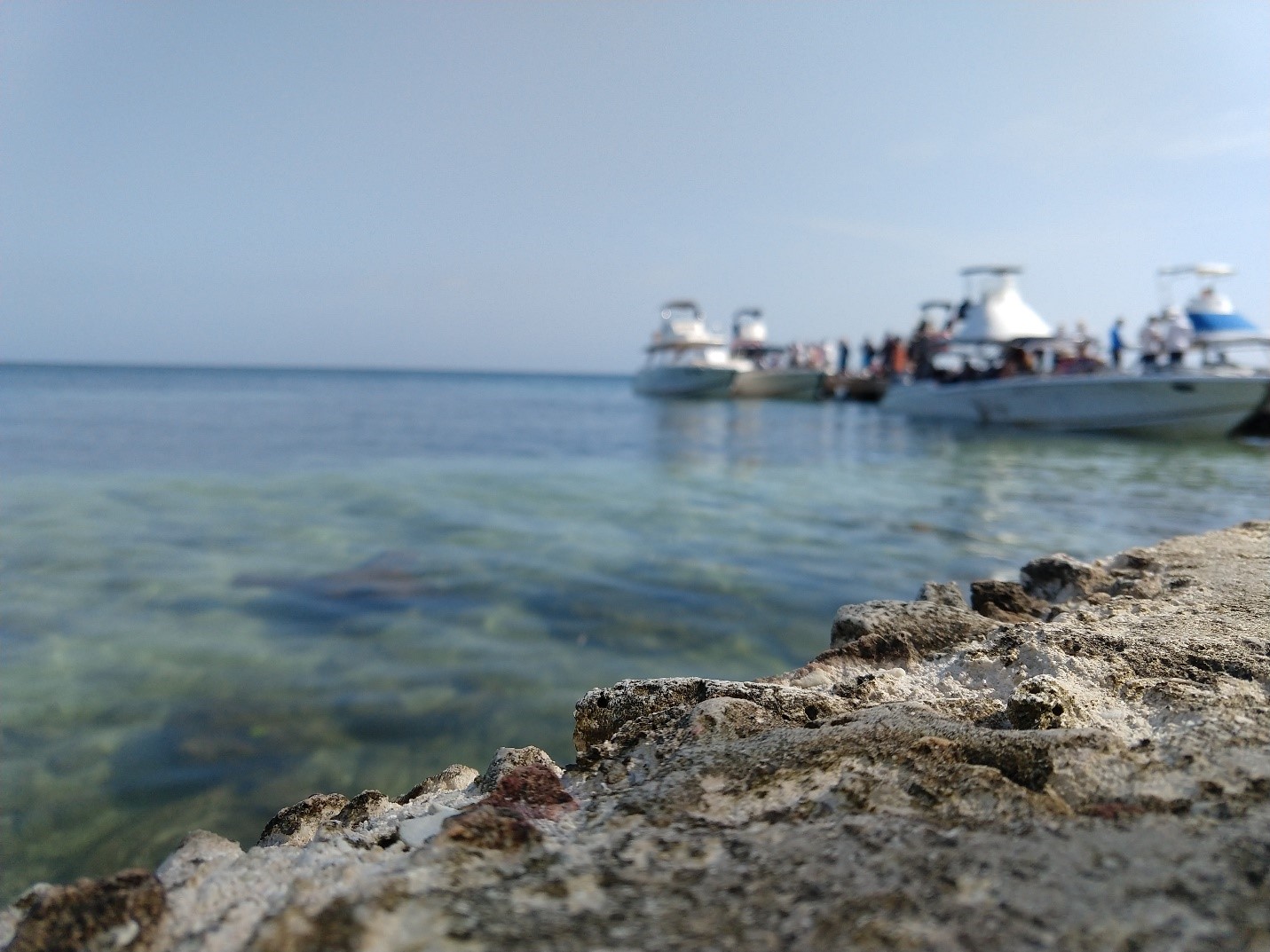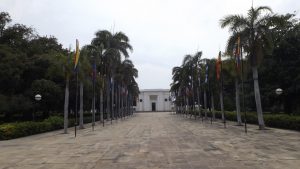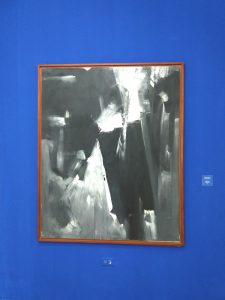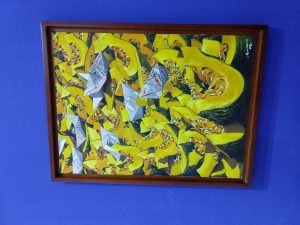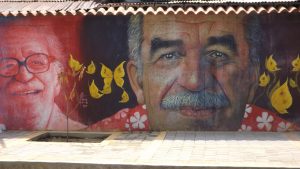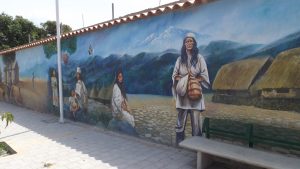Mickayla Bacorn
UMBC Faculty-led: Spanish Language Immersion in Colombia
Major: Biochemistry, Spanish’
Jump to: June 14, July 25, August 1, August 8, August 13, September 18
14 June 2019
Hello, I’m Mickayla!
When I was applying for college, I wrote in my essays that I hoped “to culturally educate myself through spending summer(s) abroad to experience other people’s lifestyles and culture.” Even though I wanted to study abroad, I didn’t think it was practical as a double major of a STEM subject and language. During the fall semester, I got an email about winter study abroad and followed it to the summer abroad programs. Once I saw the Barranquilla Colombia program, my doubts changed. As I researched this program more and more, my excitement grew. I felt in my gut that it wasn’t “I want to go” but “I need to go”. That said, I’m thrilled and terrified to be leaving the familiarity of home in 30 days. (I have a countdown on my phone screen that shows how many days until I fly out; so, yeah, I’m really excited).
First, here’s why I’m terrified. I’m a little nervous about flying because I’ve never flown out of the country. I’m also nervous that I will not be proficient enough in my Spanish speaking skills. I know that I am much better at reading and writing in Spanish. I have less experience speaking Spanish so I know that I will struggle with verbalizing my ideas and needs while abroad. Additionally, the program is five weeks, which is a long time to be away from my family and friends.
However, all my fears seem insignificant in comparison to my great excitement. From what I’ve researched and heard through friends, Colombia is a beautiful and vibrant country. I look forward to connecting with the people and culture there. I can’t wait to learn new dances and the rich history of the region. I am looking forward to the diverse cuisine of the coastal region. I have a friend that lived in Barranquilla for five years and she loved the food.
In the past, I have always learned best through “trial by fire”. In Colombia, I know that I will improve my Spanish by speaking through my communication blunders. Fortunately, I’m going to be with other Spanish-learning students from UMBC that can share their knowledge and experience with me. Additionally, according to most linguistics, Colombians speak the clearest and best Spanish so it is the perfect location to learn more.
I’m doing my best to prepare before I leave. We have had two meetings with our faculty member, Profesora Hernández. She introduced everyone, helped us find plane tickets, and discussed some basic adjustment information. Most importantly, she has prepared us for one of the biggest adjustments: the heat! Today in Maryland, the “real feel temperature” is 74 F. In Barranquilla, it is over 100 F. I am stocking up on sunscreen and light colored clothing. Additionally, I have been reviewing my Spanish a little every day. I found a Colombian television show recorded in the region of my program. I hope that my review and listening practice will help me adjust to the language change faster.
However, not all of my preparation is going as smoothly as I’d like. Most of my Spanish professors call me “Michaela”, the Spanish equivalent of “Mickayla”. During my preparations, I thought it would be cute if my host family has children and the kids call me “Mica”, easy to say and short for “Michaela”. Upon further research, that was a terrible idea! In Colombia, “mica” is slang for “potty”. If I didn’t check that before I left, I would have given people permission to call me “toilet”!
Everything is moving so quickly. My excitement is growing every single day. Last week, I took the written Spanish placement test. Tomorrow, I will complete the oral interview online with a professor from La Universidad Del Norte. At the beginning of July, we have our final group meeting before the program begins and our blackboard classroom opens. I can’t wait.
After a week in Barranquilla, I can confirm that it is not exactly what I expected. If I am honest, it has exceeded every expectation. The people are almost intimately kind. I say intimidating because people are less outgoing and friendly in the US, so I am surprised and overwhelmed by the warm welcome I receive everywhere I go.
During the first week, I have already become accustomed to most of the major changes. I am used to the wild style of driving. If there is space on the road, a car or motorcyclist will fill it. I know I am adjusted to the heat because today I commented “it is going to be a bit cold, I should bring a jacket”. The forecast low was 80F. The food is amazing, and I am well fed so I have no complaints.
Three highlights of the week are: going to the beach for the retreat, guiding an iguana across the street, and our visit El Museo Del Caribe.
The day after we landed, we went to the beach in Barranquilla. The beach had a restaurant on it which we ordered our lunch from. I had the mojarra roja (fried fish), an iconic Colombia dish. It was served with fried plantains and creamy coconut rice. It was incredible. The fish head was served along with the rest which was a first for me.
The Uninorte campus is beautiful and full of life. There are fruit trees, flowers, scrubs, and cats everywhere. But most importantly, there are iguanas on campus! When our group went to take a photo, I saw an iguana across the street, and I wanted him to be in our photo. I walked up to the iguana and asked him to come with me across the street. To everyone’s surprise, the iguana began to cross the street. I got him to cross the entire street but then he crawled into the gutter. However, he did follow me across the street.
During the week, we went to El Museo Del Caribe. It is a museum dedicated to the culture, history, and celebration of Carnaval. They showed us the wooden masks that people wear during Carnaval and explained the significance. They also demonstrated traditional Carnaval dances. The museum itself was incredibly beautiful. Every surface seemed to be covered in colorful art. It was vibrant and beautiful (much like the culture). After the tour and demonstrations, they played music and let us dance. After becoming more comfortable, almost everyone in the group was dancing and having a lot of fun.
My two classes here are excellent. Profesora Hernandez from UMBC teaches the culture class. We have focused mostly on music and celebrations in Barranquilla. As I learn about the rich history of the region, my desire to explore and learn more increases.
My Spanish professor is Prof. Miguel. He is friendly and from the more central region of Colombia, which means his accent is a lot clearer in my opinion. For the most part, I can follow what he says during class. He focuses on making his students use Spanish. Prof. wants us to apply our knowledge and increase vocabulary. I feel most comfortable reading and writing in Spanish, so I am glad that I am being pushed to focus on my reading and writing.
Cartagena: A City Between Time
This past Friday, we left Barranquilla to experience the wonderful city of Cartagena. Our Friday classes were canceled, and the bus picked us up around nine o’clock. The bus ride was two hours, so I popped my earbuds in and listened to my favorite Colombian band, Morat. Their music is a marriage of traditional folk music and modern styles of Latin pop. As I listened to their music, I observed an environment and life that reflected that same idea. Colombia has a stunning balance of old and new in everything: music, traditions, food, architecture, etc.
We arrived in the busy city of Cartagena around eleven o’clock. We stayed at El Hotel Baluarte in el barrio Bocagrande. The hotel was stunning. Upon walking in, it felt like a movie set. It was Roman Holiday, and I was Audrey Hepburn taking it all in. Through the lobby, down the main hall, you pass a circle of rocking chairs and a large fish tank. Visitors calmly rocked in the wooden chairs that had Colombian art stamped into their leather accents. The vibrant fish were pleasant to watch from the chairs as they darted around the spacious tank.
Cartagena is typically hot and humid, so the architecture must utilize shade and open areas to moderate temperature. Entering the breakfast dining area, you would believe that you stumbled upon a garden in the center of the building. There was no ceiling in this section of the hotel (a staple of coastal architecture). Looking up, warm sunshine peaked through the thick, waxy leaves of tropical trees. The tiled area had almost as many trees as tables. Bright, hand-carved, wooden parrots were stationed in every tree to greet visitors. The tables were small with few chairs. It was an intimate and welcoming environment, similar to a cozy cafe.
My roommate and I followed the spiral staircase to our room on the third floor. Each floor and room had unique art and styles. Our room was blue with a beautiful tile inlay. Bright sunlight fell through the large window onto the white tile floor. Its warmth radiated through the entirety of the room and welcomed us. In short, the hotel was designed impeccably. The architecture in Colombia does not possess artistic elements, instead it is art itself.
After gawking at the beauty of the hotel, we took a city tour around Cartagena. The tour began in the most modern parts of the city and ended in Old Cartagena. The first stop of the tour was along the urban harbor. The street was full of life; there were locals going about their business, tourists taking photos of everything under the sun, and vendors shaking maracas as they attempted to capture the attention of buyers. It seemed that all paths converged at the harbor, the heart of the coastal city. In the afternoon light, an advanced and urban city reflected in the bright blue water.
Shortly after our first stop, the driver took us to el Castillo de San Felipe de Barajas, a historic castle close to the harbor. Surrounded by skyscrapers, the castle proudly stands with incredible prestige. The juxtaposition of old and new peaks on Carrera 17 between the castle and developed hotels. The castle was enclosed and protected by a series of walls, which provided protection from pirates during the 1500’s.
Our final stop was Old Cartagena, a reminder that Cartagena is a city living between past and present, with its cobblestone streets and colorful boutiques of modern fashion. I know that I am constantly commenting on the colors of Colombia, but it is impossible to stop; I am endlessly stunned by the vibrant colors displayed on every surface in this country. Wooden doors of vibrant hues were the entrances to shops and housing. The pastel walls of buildings contrasted with the bold colors of the flowers that grew on them. The colors were strong and present without being loud or overbearing.
A particularly beautiful part of Cartagena was in el barrio Getsemaní on Calle Angosto. The alley with colorful umbrellas hanging between the buildings attracts both locals and tourists. The black shadows cast by the pink, green, blue, purple, and yellow umbrellas have a magical quality to them. It felt like a setting from a Gabriel García Márquez story (Colombian writer famous for his stories of magical realism, more about him in my post about Santa Marta).
Our Saturday was spent on a private island with a beautiful beach. From a harbor that reminded me of Baltimore, I took my first, very windy boat ride which lasted forty-five minutes. The salty air made my hair flap behind me like a ribbon on a kite. It felt amazing and refreshing, a blessing after two weeks of intense heat. Upon docking at La Isla del Encanto, we were greeted by a musician and wonderful fanfare (Colombia’s warm welcomes are unmatched). The clear, shallow water revealed bits of seashells and coral mixed with fine grains of sand. The island had many activities to enjoy, including kayaking, scuba diving, and snorkeling in the ocean. It was a lovely day at the beach.
Overall, the weekend was incredible.
I deny the fact that I have been in Colombia for three weeks; it has only felt like three days. My time here has been passing too quickly. Every day is occupied by various activities that educate and distract me. I approach my last two weeks with caution as I know my adventure slips away.
I had a small victory this week! Monday was the first day of classes for the regular fall students at Uninorte. New freshmen wandered the campus, much like me on my first day at Uninorte. Side note: I am convinced that every person in Colombia owns at least one Colombia Nacional jersey. On their Independence Day, almost every person I saw was wearing one. This Monday, I was wearing my Colombia Nacional fútbol jersey. While I was walking to my class, a new student stopped me and asked for directions to her class. She thought I was a regular Uninorte student! It felt great to know that I’m beginning to shake my “gringa” status and blend in. Of course, I had no idea where her class was, and I had to direct her to an actual Uninorte student for help. However, this made me feel great, since my efforts to speak Spanish and adopt the style and flow of life here were realized.
Among our various cultural activities this past week was a clase de cocina colombiana. This cooking class was hosted by the Cocinar Escuela de Gastronomía in Barranquilla. The culinary school was designed with the same style as other buildings I have previously described. It was centered around an open patio with lively vegetation. The culinary school even had a tropical fruit tree within it. The friendly staff let us eat the refreshing fruit from the tree. Naturally, the ripe fruit were at the top of the tree far beyond our reach, so we had to use a long PVC pipe to knock them down. I really enjoyed knocking them out. The fruit were red and the shape and size of a large grape, but they were much firmer. Upon biting them, the fruit dripped juice everywhere since they contained only juice and a large pit. The taste was mildly sweet and a little starchy.
During the class, we learned how to make three types of arepas. An arepa is fried dough in the shape of a disc and they are an important staple of Colombian cuisine and culture. During a typical week, I eat them every other day and see them during almost every meal. The three types we made were yellow maiz arepas with egg (arepa de huevo), white maiz dessert arepas, and cheese stuffed yuca arepas. The dough was already prepared when we arrived but the yuca dough still needed to be kneed. Immediately, I volunteered. When I was a kid, my mom would make bread from scratch at home all the time. I have watched her knead bread a thousand times and done it myself hundreds of times. My palms are wide and strong; it’s in my blood to knead dough. Needless to say, everyone was impressed by my dough kneading skills.
Once all the doughs were ready, we had to measure the dough to an exact weight and press it to a specific shape and depth. The instructor was very particular about the size and shape of the arepas. My arepas were rejected at the pot of oil multiple times before they were truly ready to be transformed from a gritty disc of dough to a delectable arepa. Eventually, my arepas were approved and authorized for deep frying. You would never be able to guess from the appearance of the people but most of the staple foods in Colombia are deep fried (arepas, patacones, aborrajado, empanadas, etc). The assistant chef monitored the frying since the oil was very hot.
The results of our experience were mostly positive. Before the cooking class, I had only tried white maiz arepas con queso at my host family. I liked the crispy exterior and the saltiness of the cheese. They remind me of movie theaters since the flavor of the white maiz arepa is similar to salty popcorn. The arepas de huevo from the class were delicious and savory (pictured in the leftmost pan). They required more work while cooking because after frying the dough, the arepa had to be sliced open so the instructor could pour an egg into the pocket. It was then refried. I would definitely eat an arepa de huevo for breakfast in the future (although people eat them throughout the entire day).
The arepas dulces were, in generous terms, not to my personal liking (pictured in the middle pan). The basic white maiz dough was prepared with white sugar and anise to create the dessert quality. While shaping my dessert arepa, I tasted the raw dough. It wasn’t sweet to taste, so I snuck some extra sugar into mine (and by “some” extra sugar, I mean a lot. I added a lot of sugar when the instructor wasn’t looking). The additional sugar caused my arepa to turn brown after being fried, opposed to the typical golden-brown edges. When I bit into my arepa dulce, I felt nauseous. The anise flavor was so overwhelming, it was borderline offensive. To this day, thinking about the arepa dulce makes me nauseous.
The yuca arepa con queso was much friendlier to my taste buds (pictured in the rightmost pan). It was a warm and full flavor. It reminded me of home.
I have included photos of some of my favorite meals in Colombia.
Patacones
Hawaiian pizza is surprisingly one of the most popular types of pizza in Colombia.
Lunch with an empanada at Uninorte.
In preparation for our weekend excursion to Santa Marta and Aracataca, we watched a well-made documentary, titled Gabo, about the life and work of Gabriel Garcia Marquez. The documentary highlighted the influence of the region on his development as a person and writer. He was truly a gifted writer and incredible person.
Our Saturday was spent (mostly on a bus) traveling to Santa Marta, a coastal city to the east of Barranquilla. It was a long drive since we had to circumnavigate the Ciénaga Grande de Santa Marta, the large marsh and body of water along the coast that separates Barranquilla and Santa Marta. Although the drive was lengthy, it passed quickly as I talked with my friends and enjoyed the beautiful scenery of the marshes and beaches that line the coast.
After checking into our Best Western Plus hotel and eating lunch, we left to tour La Quinta de San Pedro Alejandrino, an estate made famous since Simon Bolivar dropped dead in la sala. Although Simon Bolivar resided at La Quinta for only a few days before dying, his importance in this region of South America is great enough that the Colombian government made La Quinta a historic, national monument. I have to say that in my hometown, there is an entire mountain that is named after a civil war general because he walked over it and wrote about it in his journal once. So I can understand.
Getting back to La Quinta, the architecture was stunning with its influences dating back to the Roman Empire, as well as Spanish design with its bright Castilian hues. The pale yellow walls of every room diffused the sunlight to a warm glow. Dry dust from the dirt floors shifted between my sandal and the sole of my foot with every step.
My favorite parts of La Quinta were the iguana preservation movement and the art exhibit. The land on La Quinta is protected and preserved for its biodiversity representative of the Caribbean region. That said, there were many iguanas roaming the grounds. We stopped to watch them as they slowly crawled through the dry grass. As we watched them and for no apparent reason, they rushed towards a tree and began to climb it. The tree was very large, but it was insufficient to house all of the iguanas that attempted to climb it. However, that did not stop the swarm of iguanas. The bark disappeared as all the iguanas piled on. In the moment, I was personally intimidated. I searched for the threat that drove the iguanas to seek shelter in the tree. The iguanas were locals and I trusted their judgement more than mine, but I couldn’t find the source of danger.
The art exhibit was part of el Museo Bolivariano de Arte Contemporáneo. The contemporary art pieces were moving. I tried to allocate my short time in the exhibit evenly to each piece, but I was instantly drawn toward an abstract work. It initially appeared to be composed of bold brush strokes in only black and white. However, upon further investigation, I discovered that there were flecks of yellow and blue hidden within the painting. I admired this painting extensively before continuing through the rest of the exhibit to appreciate the other pieces. Caribbean influences were evident throughout the entire exhibit and demonstrated through color, subject, balance, and movement.
The next day, we traveled to Aracataca, a smaller and colorful city. The first site we visited was el Parque Lineal Macondo, a beautiful mural along a small stream. The mural included work from various artists that highlighted the works and passions of Marquez. The mural is over a thousand feet long and covers more than ten thousand square feet of wall. As we walked between the mural and parallel stream, I was deeply moved by its beauty. The vibrant and happy colors reflected the pleasant disposition of most Colombians. I was particularly impressed by the collaborative effort of the artists as each portion flowed into the next seamlessly.
Overall, I saw a lot of incredible art this past weekend.
For other students considering studying abroad, especially STEM majors, it is absolutely worthwhile in every way. From my experience and time abroad, I gained skills beyond the expected intercultural communication skills. My ability to adapt to and process an overwhelming environment was one of my most valuable takeaways. During my time abroad, I was surrounded by a culture and language that I did not always understand and that I was not always understood by.
The most challenging moment was my final morning in Barranquilla. It was a whirlwind of emotions. I missed my family and the familiarity of home but, at the same time, I was beginning to feel like I had a family in Barranquilla and there was a familiarity to the city. However, all of those emotions transformed into pure stress after I woke up two hours late to a phone with twenty missed phone calls. My roommate and I had overslept. In a fearful frenzy, we grabbed all of our luggage and rushed out of our host family’s apartment. Our goodbyes were rushed, and we were in tears. Despite our speeding taxi driver, it was too late, and we had missed our flight. Quick recommendation to anyone that studies or travels abroad: do not miss your flight! It is a stressful (and expensive) mistake. Fortunately, we were able to get a flight a few hours later and return home on the same day. Through the process, I had to dig deep within myself to remain calm and find solutions to our problems. When I was stressed and emotional, I defaulted to speaking English, so it was imperative to clear my head and communicate with my environment in their language, not mine. Being able to adapt to situations like this will serve me well in the future as I pursue graduate studies and a high stress career.
Reflecting on my experiences and life in Colombia, one of my biggest takeaways is the disposition and attitude on life that the Colombian and Caribbean people had. I lived on “Caribbean time” for five weeks. Immediately within the first weekend, I noticed everything was more relaxed and, since traffic was terrible in the city, times were estimates. Further into the trip, I realized that “Caribbean time” is about more than just time and being late. It is a way of life there. Somethings are out of our control (time is among those things) and I feel like the people there accept that. They accept it and find joy in what they can control.
My five weeks abroad were intensely happy for me. As I left Barranquilla, I knew that I would return. I have seen less than 1% of the wonders that Colombia offers, and I cannot ignore the other 99%. I learned more about how people live and work. My Spanish improved greatly, and I discovered a passion for travel and culture. I look forward to a future of more international travel and Spanish speaking. I already have a plane ticket for my next trip to South America (three weeks in Peru next summer). As I focus on the now, I hope that as I transition back to life in the United States that I can remember all the good times that I had in Colombia. I hope that my life can be a beautiful, loud, disorganized, colorful, diverse, and rich adventure driven by “Caribbean time”.


